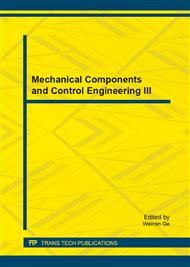p.1458
p.1462
p.1466
p.1470
p.1476
p.1480
p.1488
p.1493
p.1499
Development of a Microscopic Simulation Based Performance Evaluation Model to Compare Operational Improvements with Capacity Additions
Abstract:
The objective of this study is to develop a microscopic simulation model to objectively compare operational improvements with capacity expansions. Simulation software VISSIM was used to redesign the existing facilities for the performance evaluation of operational improvement and capacity expansion strategies from delay time, emission and fuel consumption perspective. Two case studies were performed with different test beds to evaluate the effectiveness of performance evaluation model, majorly involving dynamic speed, ramp metering and hard shoulder usage strategies which are discussed in detail to illustrate the changes due to operational improvement and capacity expansion strategies.
Info:
Periodical:
Pages:
1476-1479
Citation:
Online since:
October 2014
Authors:
Price:
Сopyright:
© 2014 Trans Tech Publications Ltd. All Rights Reserved
Share:
Citation:


